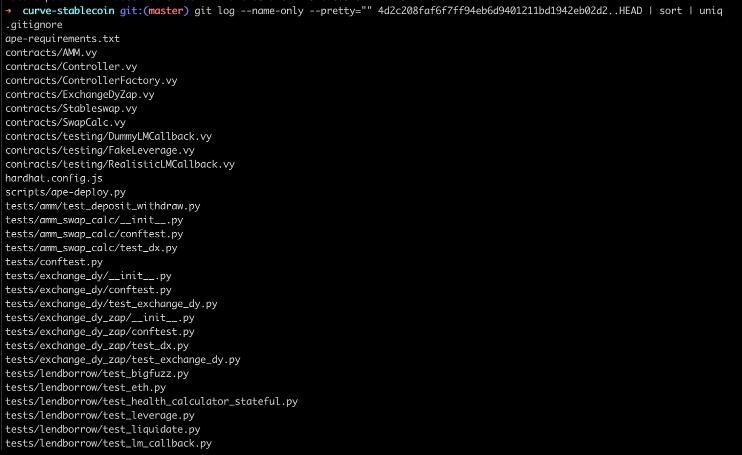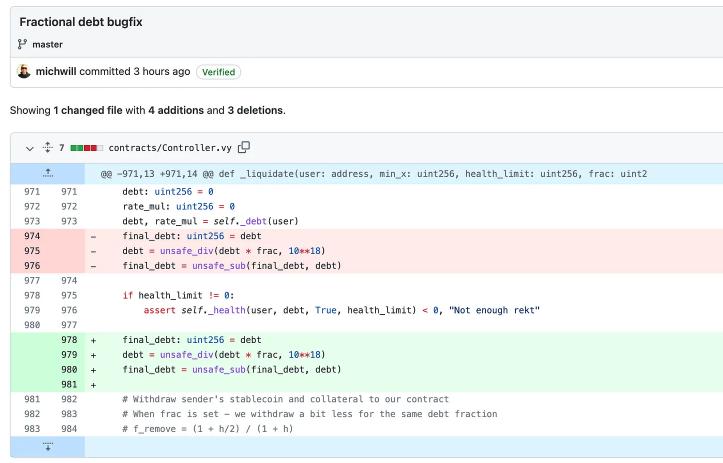Original title: "Wen $crvUSD? CAN CURVE DEVS DO SOMETHING?》
Original author:crv.mktcap.eth,Curve Market Cap
Original title: "
Original author:
Wen $crvUSD? (When will the crvUSD stablecoin be released?) This is the most asked question in the Curve community recently.expressexpress
crvUSDwhite paper, despite regulatory scrutiny, Curve is looking to launch its own over-collateralized stablecoin. This seems to indicate that the DeFi protocol has joined the ranks of the stablecoin market share after the collapse of UST.
white paper
For a long time, Curve has been considered the most liquid DeFi protocol for many stablecoins and derivative collaterals, which also allows Curve to almost have the pricing power of tokens such as stETH. As the Shanghai upgrade is approaching, if crvUSD is launched at this time, it will undoubtedly give Curve more advantages in the "Shanghai Upgrade War".
Main points:
It has been 3 months since the release of the crvUSD white paper, how is it going? crv.mktcap.eth interpreted the details and progress of the Curve development team's deployment of crvUSD on Github in the past month. This article is compiled by ChainCatcher.
Main points:
1. Due to the immutable nature of smart contracts, the Curve development team is testing more extreme cases and functions that may be required in the future.
2. Gas optimization, saving costs for users.

3. The administrator function is used to optimize the income of the fund pool.

Even if you know nothing about coding, there are still some pictures that can be used to confirm that the Curve developers have been working on something.
For developers, we mainly mean Mich, the founder of Curve, whose Github has maintained a high-frequency update progress. To gain insight into what has happened recently, we can quickly check which files have been modified in the past month.

As we all know, crvUSD could have been launched last month, but it currently looks very different from before. The developers added many additional tests to crvUSD. This is very important because crvUSD is uncharted territory in many ways. Auditors may miss something, and passing more robust tests means crvUSD will be more secure at launch.
Most importantly, these tests are still finding bugs. A history entry titled "bugfix" can be a big deal.
Changes in smart contracts in actual operation deserve more attention than changes in unit tests. Since smart contracts are immutable, Curve smart contracts are even more immutable. Some protocols defraud users by using upgradable proxy contracts. Proxy contracts allow an address to inherit its logic from any other address and can be changed at any time. Curve doesn't do that. This is great because it means no one can bully you.
But on the other hand, it's also bad because it means developers can't fix bugs or add new features after the fact. Developers need to spend a little more time thinking about corner cases and need to foresee every possible future feature before releasing the official product.
It's impossible for anyone to do everything right, but spending more time researching a contract (by writing new tests) before it launches can reveal the usefulness of new functionality.
As it stands, the crvUSD smart contract suite is more featured and user-friendly than it was when it launched a month ago. A few examples:

A problem with early Curve contracts was the lack of get_dx(), get_dy() functions, which were used to show how many tokens the user would get for a particular input. Because sometimes people users know how many tokens should be provided to ensure a certain output.
The new logic provides a get_dxdy() function with a useful toggle to determine whether it is used as get_dx() or get_dy(). These changes can be confirmed in the curve-stablecoin-js repository.

This middleware repo has much less activity, indicating that it is in a more mature stage. As far as the front end is concerned, most of the functionality is the same. The only change over the past five months is a modification to support get_dxdy().

Another new feature added last month is the ability to withdraw small amounts of liquidity for users.
The same goes for the clearing function...

We can see from the smart contract that the Curve development team spends more time on Gas Golfing to improve efficiency.
ChainCatcher Note: Gas Golfing refers to the challenge of developers writing the most gas-saving code in a series of smart contract jump interactions.
Gas optimization is important because Curve contracts are complex. These complexities become more manageable because Curve is written in Vyper, which has a more efficient compiler than other smart contract languages. Even then, further gas savings can be achieved through careful design.FiddyWe saw this directly with Curve's v2 pool. Uniswap v3 puts the responsibility of rebalancing liquidity on LPs, who have to change positions as prices change, while Curve v2 pools do it automatically. In both cases, Uni v3 has gas paid manually by LPs when rebalancing positions, while Curve v2 incorporates the logic internally.
In fact, Curve developers




